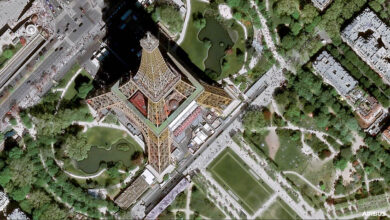India sending another rocket to the moon-with Chandrayaan-3 lunar lander and rover
By R. Anil Kumar
Bangalore, July 9. India’s space agency, the Indian Space Research Organization (ISRO), is just days away from sending its rocket and spacecraft up for a soft moon landing.The 6-billion-rupee (US$73-million) mission, called Chandrayaan-3, is the second attempt by the Indian Space Research Organisation (ISRO), to land on the moon.

ISRO made the announcement on Twitter that the three-stage rocket has been attached to its rocket at the launch-pad at Sathish Dhawan Space Centre at Sriharikota for its lunar landing Chandrayaan-3 mission.
This launch comes after ISRO lost its Vikram lunar lander to a hard landing that caused it to lose communication with the Spacecraft in 2019.

India is sending another rocket towards the Moon, following the 2019 crash landing of their Vikram lunar lander.
If India’s latest rocket successfully lands on the moon, then the country will be only the fourth nation to complete a soft moon landing after the US, China, and the Soviet Union.
It would be a major accomplishment for the ISRO which have some exciting scientific implications for our understanding of the moon’s unique geology and surface.
This is because, ISRO is choosing to go after untraversed ground and put its lander on the moon’s southern pole, which has been almost entirely unexplored up to this point.

If India’s rocket successfully completes its mission, ISRO will drop off a 57-pound rover, known as Pragryan, to explore the surface for about 14 days.
The Vikram lander, which will deploy the rover, will also be on the surface, taking measurements of surface temperatures, ion and electron densities, and seismic activity.
With its previous attempt coming incredibly close to success, there’s hope that the third time will be the charm for the ISRO.
India is trying to land on the Moon’s southern pole, a mostly unexplored region, which is why it’s been a long and difficult process.
As mentioned, India sent a rocket up to the moon in 2019, but the mission, dubbed Chandrayaan-2, didn’t pan out. However, ISRO was still able to get deploy a lunar orbiter, so there was a success to be found in the mission overall.
Chandrayaan-3, came together much faster in the wake of the Chandrayaan-2 failure, considering the Chandrayaan-1 mission happened way back in 2008.
India was also successfully able to deploy a lunar orbiter during the 2008 Chandrayaan-1 mission, so this rocket will be fore-going that step and focusing only on landing the Vikram payload.
Hopefully, leaving behind the orbiter and focusing more on getting the lander on the surface will make the mission a complete success. It would certainly be cool to get additional data on the moon and see another major nation join the moon-faring club.
We won’t have to wait too long to find out if India’s latest lunar rocket mission will be a success, as the Chandrayaan-3 launch is set to take place on July 14.
The Spacecraft is set to take off from ISRO’s Satish Dhawan space centre, in Srihari Kota, and it is set to reach its final destination sometime around August 23rd or 24th if everything goes to plan.
Meanwhile, ISRO Chairman S. Somanath, on the ambitious mission, said that, has ‘Reviewed Challenges and Worked on Chandrayaan 3’
S. Somanath, revealed crucial details about the highly anticipated launch of Chandrayaan-3.
He discussed the lessons learned from the previous mission, the improvements made, and the ambitious scientific experiments planned for the upcoming lunar mission.
Somanath said that “we are looking at studying the surface, the moon, the goliath in greater detail. We are looking at the elemental composition, how it is constructed.
We are also putting a probe 10 cm deep into it, to understand the thermal conductivity, which is an important attribute on the science part of it.
We are looking at the close atmosphere very near to the surface, which we call a “thin atmosphere”, which is more like a “charged atmosphere”, and we are measuring it.
We are measuring the seismic activity of the moonand are putting an instrument on the surface, which has a very high sensitivity acceleration measurement, so it can see the internal processes happening, these are the essential measurements that we are doing.
ISRO is determined to overcome challenges and achieve success, showcasing its unwavering commitment to pushing the boundaries of space exploration.
A successful landing could also be an important step towards future Indian Moon missions and is seen as a demonstration of India’s growing geopolitical ambitions.
If successful, India’s Moon landing will have “important technological and geopolitical dimensions, arguably without a dramatic impact on foundational scientific knowledge.
In the meantime, NASA is in the process of launching its own moon mission and is planning on sending some astronauts to the southern pole of the moon in a couple of years, which will be the first return of humans to the moon in over 50 years and the first time human’s have explored the southern pole in history.
Images source: ISRO





